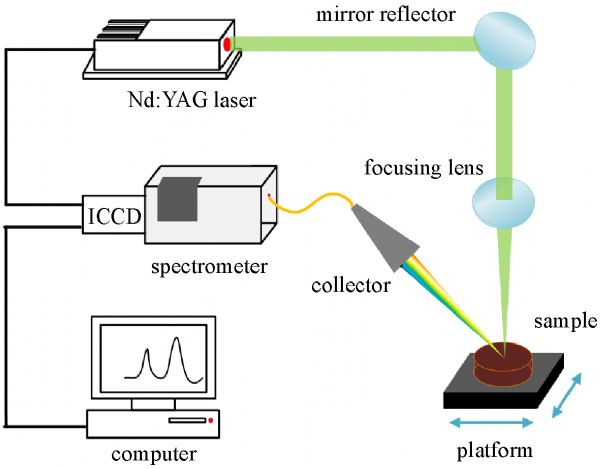Laser-induced breakdown spectroscopy (LIBS) is an atomic and ionic emission spectroscopy technique [
5]. LIBS has been widely used in meat species identification, wood species classification, soil samples analysis, oil detection, red wine classification, and material analysis and other fields [
6–
13], etc. In recent ten years, many researchers have explored the application of LIBS in the biomedical field. Chen et al. diagnosed human malignancies such as lymphoma and multiple myeloma (MM) using LIBS in combination with chemometric method [
14]. Ghasemi et al. used LIBS for the diagnosis of several malignant tissue samples including breast, colon, Larynx, and tongue [
15]. Gaudiuso et al. diagnosed melanoma using LIBS combined with linear discriminant analysis (LDA), fisher discriminant analysis (FDA), support vector machines (SVM) and gradient boosting [
16]. Chu et al. discriminated nasopharyngeal carcinoma serum using LIBS combined with extreme learning machine (ELM) and random forest (RF) [
17]. To our best knowledge, no studies have been reported about identifying Graves’ ophthalmology by using LIBS. Moreover, LIBS combined with generalized regression neural network (GRNN) algorithm for solving classification problems has not been investigated.










